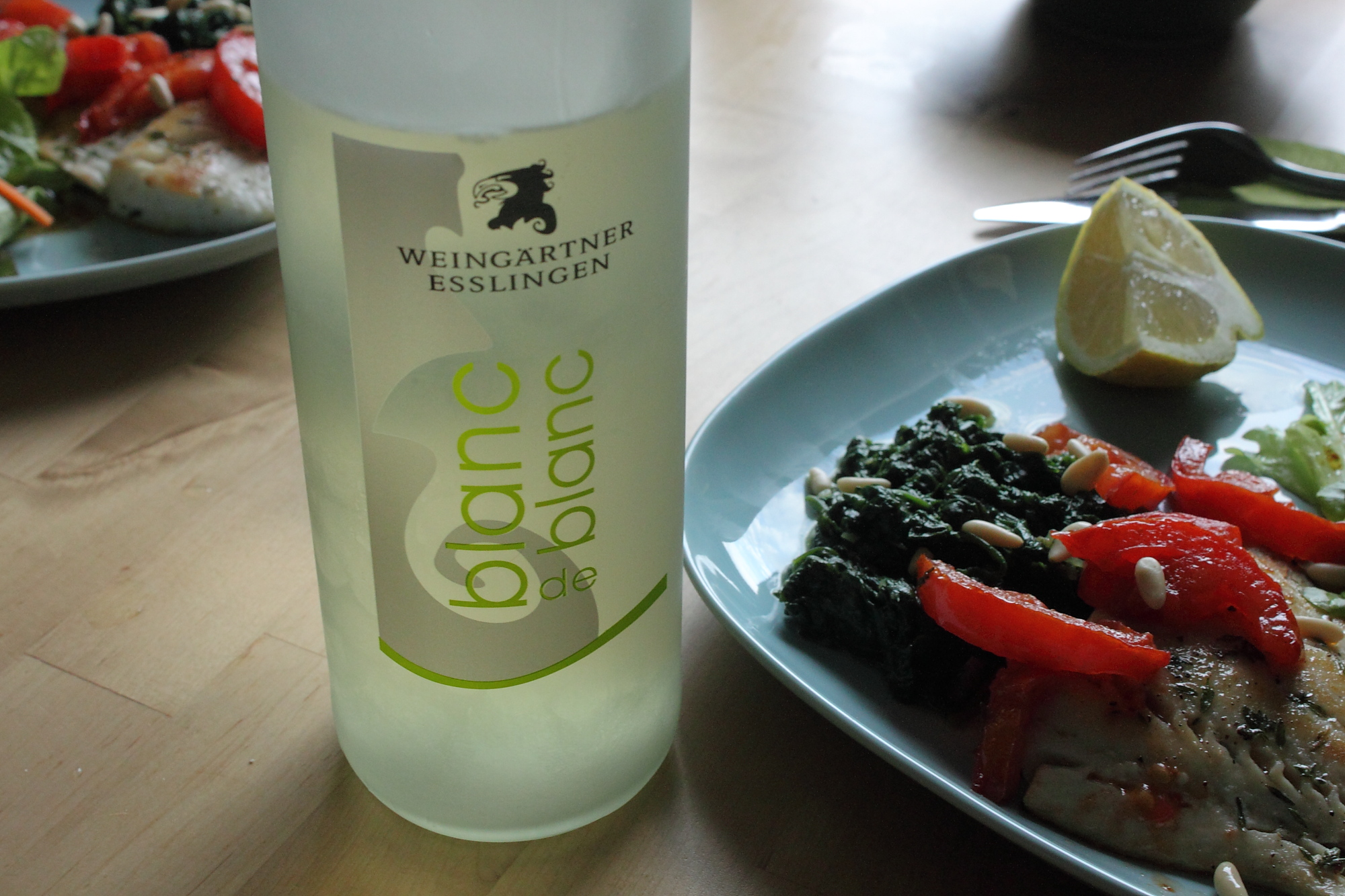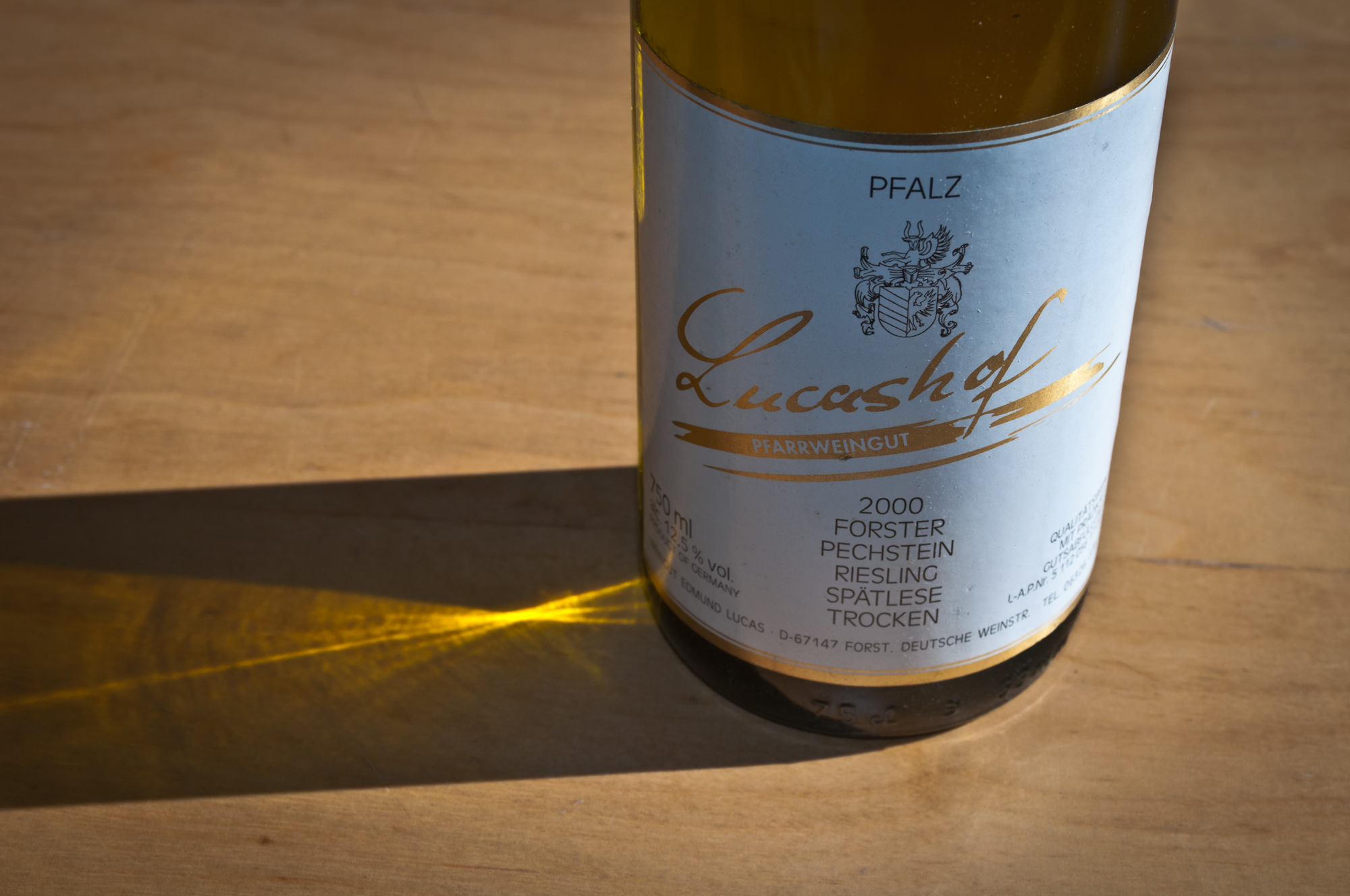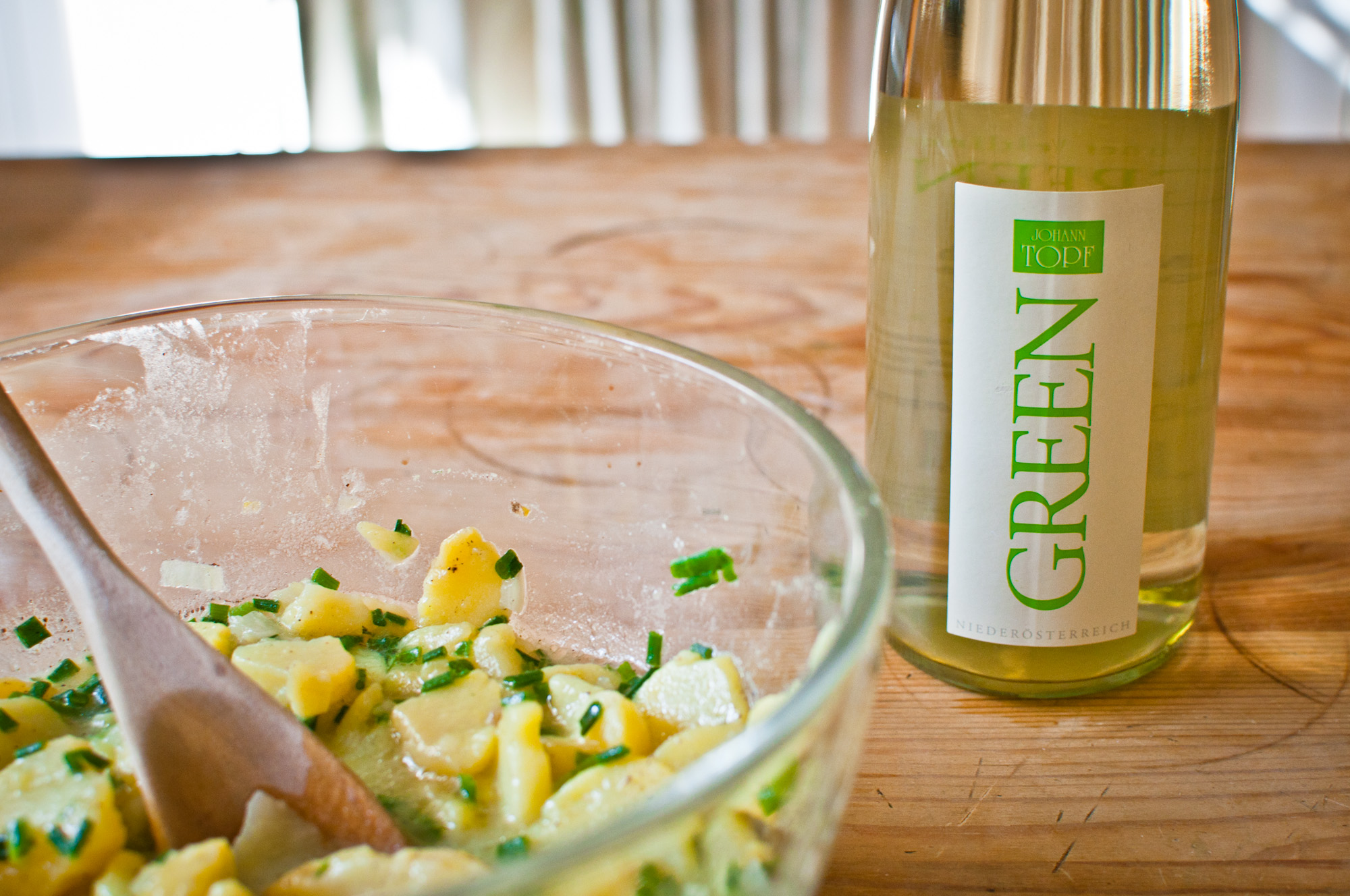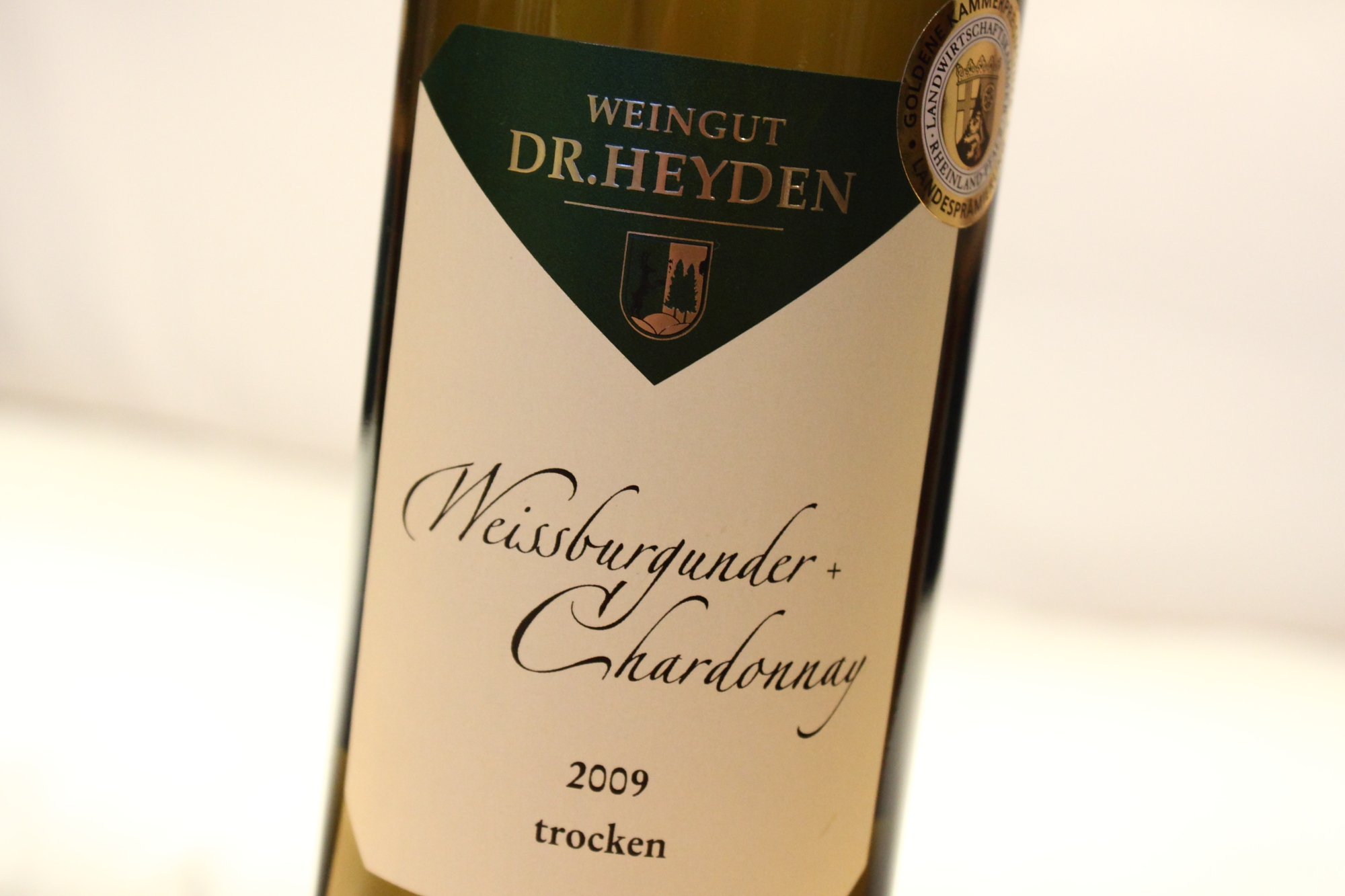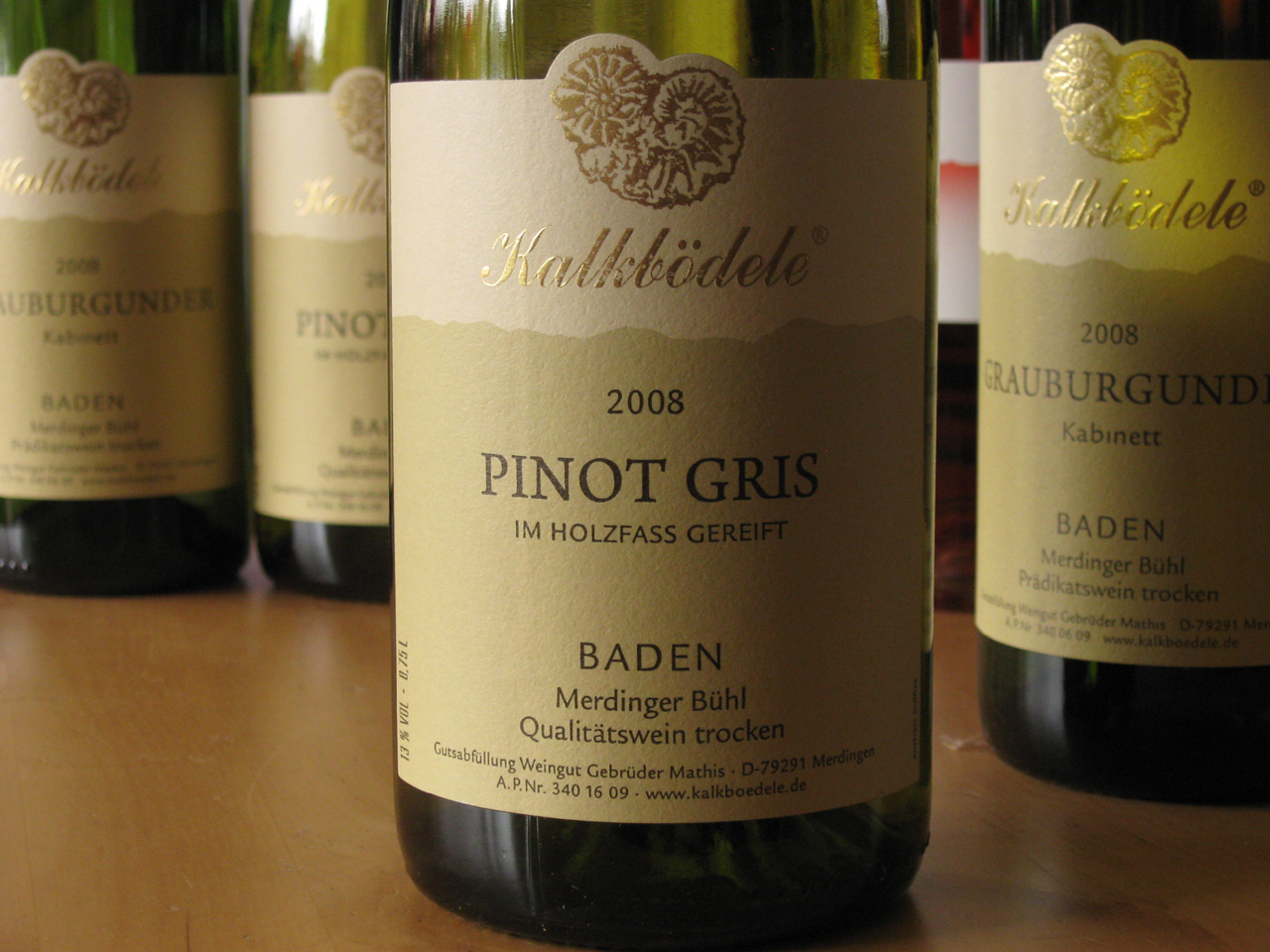Weingut Ruck, Grauburgunder trocken, 2010
One day, I will invite other wine bloggers to contribute to an anthology of awkward introductions to simple wine reviews. The things that you ponder, and then reject, so as not to have to jump in with a straight "Here is a Franconian Pinot Gris that I had recently". One thing that struck me just now, while thinking of something new to write, was how often I, while recalling a tasting experience to put together a review, will sip on a completely different wine. Today, it's Dr. Heyden's very proper old vine-Silvaner from 2009. Then, I ruminated on the pun-producing potential of the Ruck winery's name, since it means something like "jolt" or "lurch" in German.

I thought of former German president Roman Herzog's 1997 speech in which he demanded "durch Deutschland muss ein Ruck gehen" ("A jolt needs to go through Germany"), of the strangeness of this image, and whether it could be put to some kind of humoristic use vis-a-vis the Ruck family of Iphofen, Franconia. But then name jokes are off limits in serious journalism, which led me to the question whether the Wine Rambler actually...



